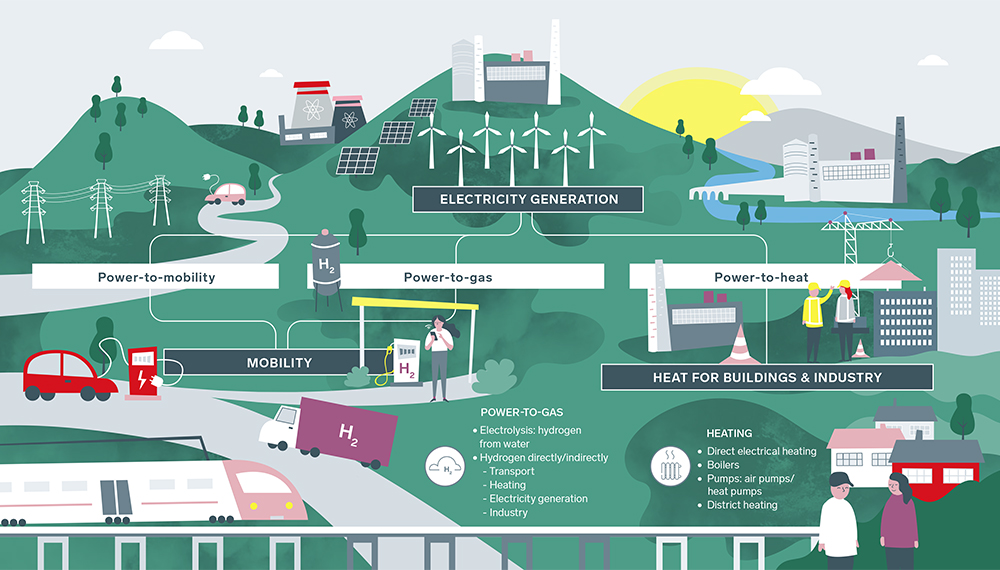 The impact of sector integration on the development of the power system and on the transmission grid is one of the key questions facing Fingrid in the near future.
The impact of sector integration on the development of the power system and on the transmission grid is one of the key questions facing Fingrid in the near future.
“There is still no certainty about the impacts, but we are studying them together with the energy sector as a whole. Sector integration will proceed in any case, but its impact on the operating environment is still an unknown quantity. We need to make preparations and study the challenges and opportunities it will bring,” says Jussi Matilainen, Fingrid’s R & D Manager.
Renewable energy sources provide energy in varying amounts, but the power system must maintain a constant power balance.
“Finland aims to become carbon neutral by 2035, and sector integration supports this goal. Giving on fossil fuels will give rise to substantial growth in electricity consumption. Electricity can be used to manufacture gas, heat or fuel for transportation. In Finland, the most interesting change will be the consolidation of the heating and electricity systems into a better, more energy-efficient whole.”
It is not yet known how much and how quickly consumption will grow, which parts of Finland will demand more electricity, and how much consumption will fluctuate. As regards electricity generation, the locations of new wind turbines will affect the way the transmission grid is developed.
Fingrid is taking responsibly for the future of the transmission grid
Sector integration will help Fingrid and the industry as a whole to realise a clean electricity system cost-efficiently. However, the challenges that sector integration will place on the transmission grid must also be addressed.
“Fingrid is ultimately responsible for keeping the power system in balance, so the control centre must be able to forecast consumption and generation. The electricity network must also have enough transmission capacity. It is also our job to develop the electricity market and the related flexible market,” Matilainen says.
Fingrid cannot make preparations for sector integration alone. European transmission system operators are working together to develop the power system. In Finland, the Smart Grid Working Group has been discussing the future of the electricity network. In addition, the Ministry of Economic Affairs and Employment is managing a study in which every industry is examining what it can do to become carbon neutral. Sector integration could be a cost-efficient means of doing this.
While parties in the industry work to gain an overview of how they can reach the targets for 2035, Fingrid must prepare itself for the challenges and opportunities that sector integration will pose for the planning of the transmission grid, development of flexible markets and operation of the power system.
“Work has already begun, but there is still a need for new research and development projects,” Matilainen says.
Research projects look to the future
Researchers around the world are considering the future of sector integration.
“Universities are studying areas such as demand-side management, battery storage, improving transmission links and controllable power plants. In Finland, the spread of heat pumps and electric vehicles will support sector integration: they provide excellent support for demand-side management. As development proceeds, the heating system will be able to offer more flexibility and control. At LUT University, we are researching fields such as charging solutions for electric cars and the related business models. Smart charging systems can support the power system rather than putting a strain on it,” says Samuli Honkapuro, Associate professor in Energy Markets at LUT University.
Research is currently underway to examine the possibilities of making synthetic fuels using electricity and the carbon, captured for example from factory chimneys.






